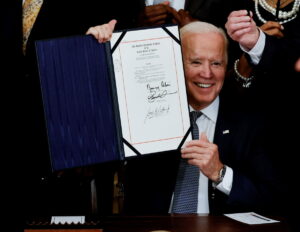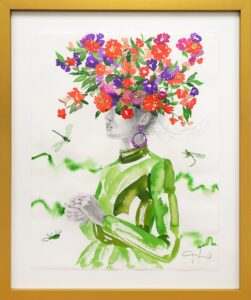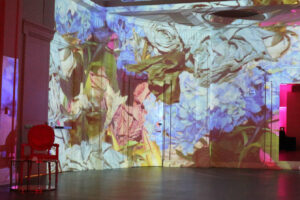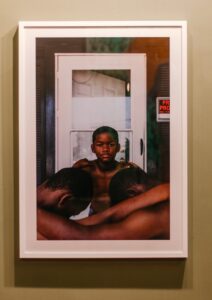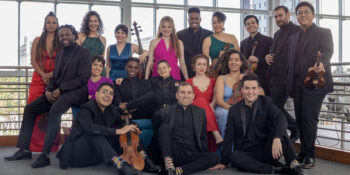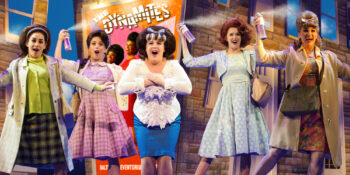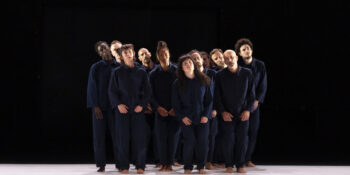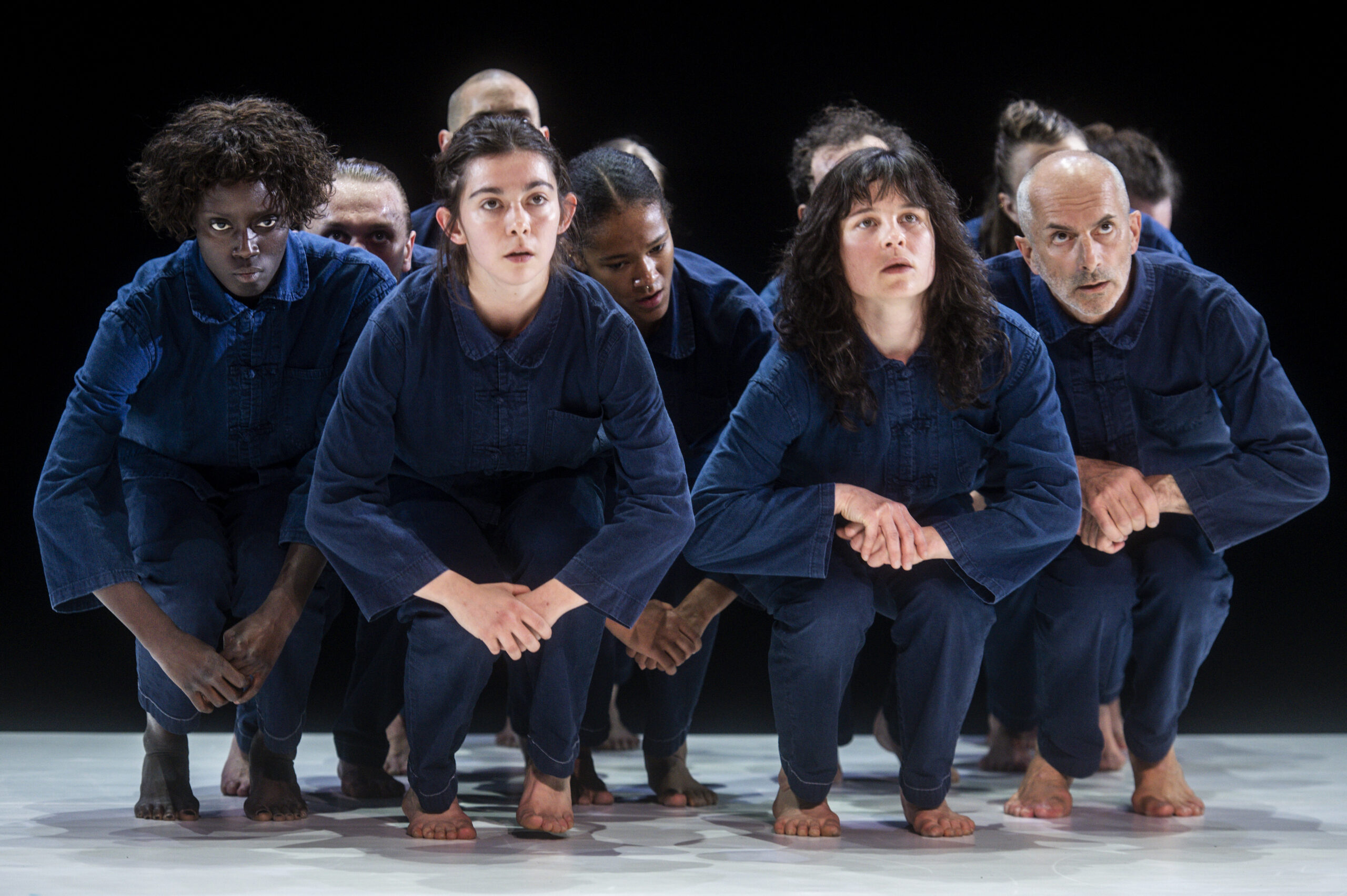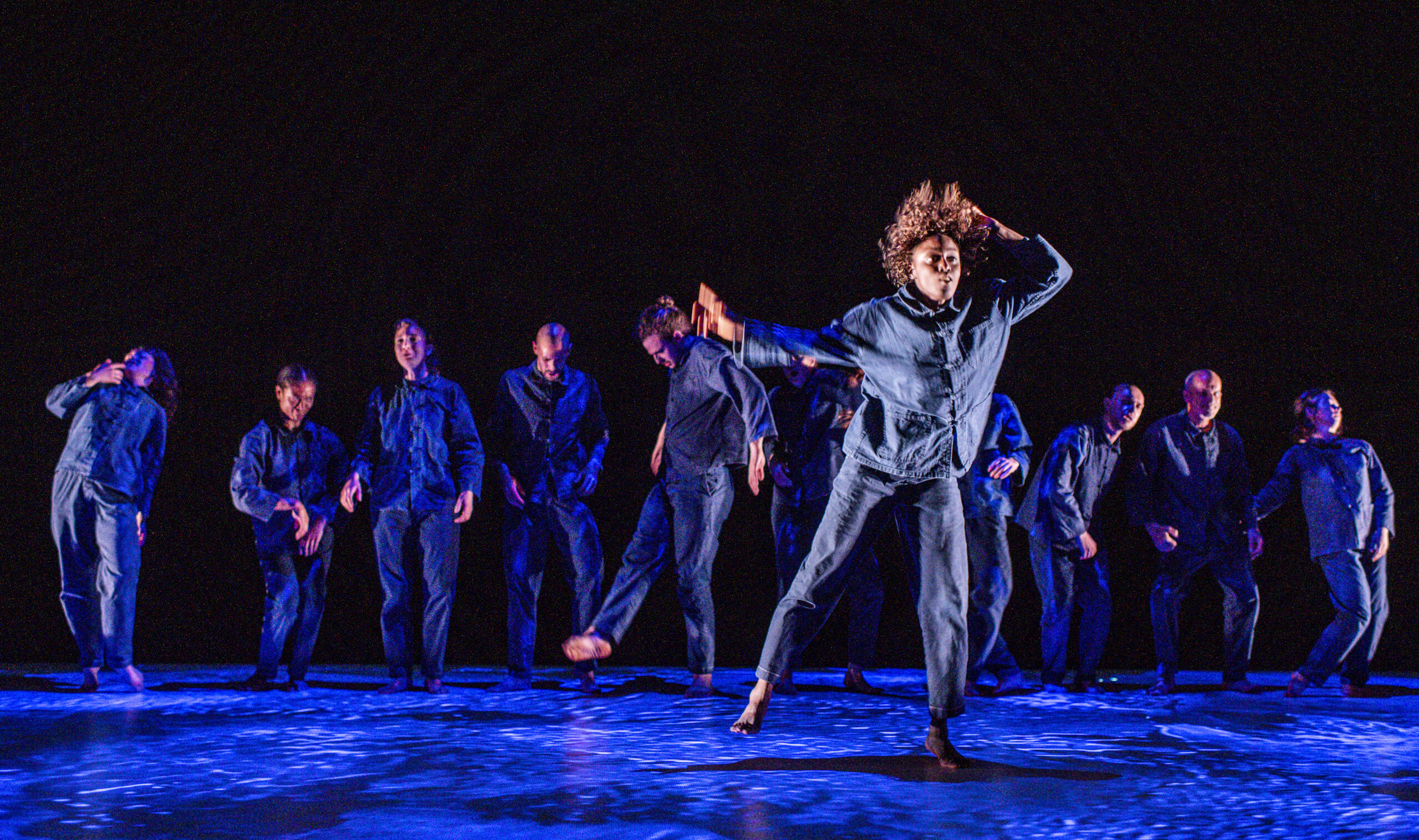Nuevo de Music City
Celebración Sinfónica del Folklore Colombiano en Bogotá
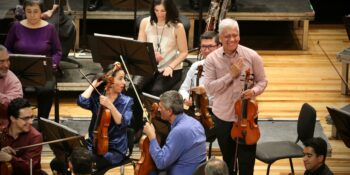
(English Version Here)
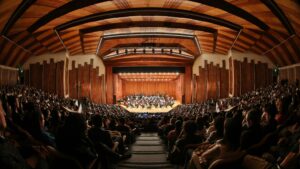
Con una trayectoria de más de 50 años, la Orquesta Filarmónica de Bogotá es un referente a nivel internacional por su amplio programa de música occidental, tradicional colombiana y latinoamericana, así como la fusión sinfónica con géneros como el rock y la salsa. El repertorio que se selecciona para cada temporada es versátil y así mismo es la maestría de sus intérpretes para reproducir el sonido auténtico de cada época y región.
Ha sido un deleite reencontrarme con la fotografía viviente del que fue el primer recinto al que asistí para escuchar a la OFB, el Auditorio León de Greiff. Esta obra arquitectónica, en el corazón de la Universidad Nacional y declarada Monumento Nacional, ha sido escenario no solo de eventos artísticos, sino que ha cedido sus tablas a vehementes discursos de transformación intelectual y social. La reciente renovación del auditorio preservó la esencia en el diseño vanguardista y su calidez acústica, y la orquesta nuevamente demostró el dominio de mezclar sus frecuencias con la estructura amaderada para obtener una amplia paleta de timbres. Otro punto que debo destacar, es que la silletería no se reformó con soportes para bebidas como está ocurriendo en importantes auditorios internacionales. En mi opinión, la combinación de música y comida, es propio de los restaurantes.
Independientemente de las generaciones de músicos, directores y arreglistas que han hecho su carrera en esta orquesta, de la diversidad de su audiencia y de la interacción con las nuevas tecnologías, la experiencia sensorial insignia permanece. En esta oportunidad, el programa tan especial que se preparó para elogiar el privilegio geográfico de Colombia, elevó a un público extasiado que no pudo permanecer sentado. Esta es otra de las cualidades en los eventos sinfónicos que persiste en el tiempo; no es solo la música colombiana o popular la que logra motivar la interacción de la audiencia con la orquesta, el público bogotano por tradición siempre ha sentido un gran aprecio y admiración por la expresión musical occidental. Recuerdo en este mismo escenario una intensa conversación silenciosa entre Johannes Moser y los asistentes, que culminó en un frenesí durante los acordes finales del Concierto para violonchelo No.1 de Shostakovich y el grito de júbilo de los espectadores. Como es costumbre en Colombia, los artistas no pueden abandonar el escenario sin desfilar cuatro rondas de aplausos e interpretar al menos dos piezas en el bis.
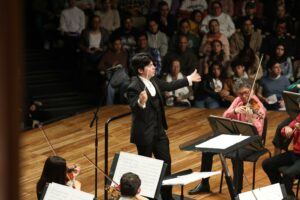
El concierto del 15 de junio, no fue la excepción; un auditorio con lleno total fue conducido paulatinamente en un crucero de emociones por las costas del Pacífico y el Caribe colombiano. En la entrevista que encontrarán a continuación de este artículo, el maestro Rubián Zuluaga, director asistente de la Orquesta Filarmónica de Bogotá, narra cómo en esta sustanciosa selección de piezas se manifiesta una mezcla de ritmos tradicionales con técnicas novedosas en la orquestación como si se tratara de música para cine. El programa es una recopilación de obras instrumentales y vocales escritas para los formatos tradicionales del folklore colombiano, que han sido adaptados con gran fidelidad y creatividad a la instrumentación sinfónica. Esta es una labor que la OFB ha procurado prácticamente desde su fundación para preservar el valor cultural autóctono del país. La colección de álbumes de estudio que le ha merecido a la orquesta dos premios Grammy Latinos, ha sido enteramente dedicada a la grabación de célebres piezas colombianas.
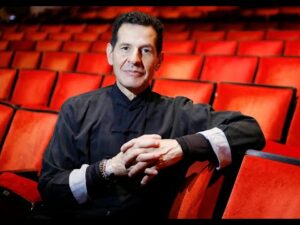
La gala inició con la obra Canción de la Tierra compuesta por Andrés Sánchez Angarita, contrabajista de la OFB. Esta pieza que hace parte del álbum “Salvemos la Tierra Ya” del mismo autor, es una exaltación a la biodiversidad, pero también un llamado a detener la explotación descontrolada de los recursos naturales. En la pieza contrastan secciones de gran densidad orquestal junto con ligeras melodías en las maderas, representando la inmensidad de la selva y las montañas, y la fragilidad de las aves que los sobrevuelan. Durante la interpretación se proyectaron imágenes sobrecogedoras de la naturaleza, así como de los desastres por causa de la industria y el exceso de residuos. Enseguida, Pachito Eché del compositor bogotano Alex Tobar, fue la pieza que suscitó el ambiente de fiesta en el auditorio. Es interesante la evolución de esta canción gracias a sus pegajosas melodías. A pesar de que fue compuesta originalmente en son paisa, género musical folklórico emblemático de la región de Antioquia, Benny Moré en una versión de mambo la catapultó como éxito internacional. Pudo ser este el motivo por el que el arreglista Ricardo Hernández Mayorga haya incluido una sección en la que la obra se desplaza a un salón de baile en la Cuba de 1950.

En esta fusión de ritmos colombianos con músicas extranjeras, es propio mencionar el trabajo del compositor Luis Eduardo Bermúdez que, gracias a su interacción con la música tropical y el jazz, le dio un nuevo significado a la cumbia y al porro. El proyecto de ‘Lucho’ Bermúdez se asemejaba a las Big Band de Benny Goodman; las agrupaciones tradicionales se transformaron en grandes ensambles de viento que interpretaban atractivas armonías y apasionados solos de improvisación. Colombia Tierra Querida, una de sus más importantes composiciones y que se ha convertido en el segundo himno del país, es usualmente la obra de cierre en este tipo de eventos. A pesar de que en esta oportunidad la interpretación era solamente instrumental, fue inevitable que el público coreara el estribillo mientras se acompañaba con las palmas y contoneara sus caderas por el hechizo de la cumbia. Así mismo cada familia de la orquesta ejecutó su propia coreografía y las secciones de improvisación en la percusión, infaltables en las músicas del Caribe por su herencia africana, lograron el clímax de la gala.

Trasladándonos hacia la región occidental de la Cordillera donde se vislumbra un océano profundo en el que las ballenas jorobadas encuentran cálidas las aguas para su época de apareamiento, el currulao congrega los sabores y saberes del Pacífico colombiano. Los compositores afrocolombianos Petronio Álvarez (1914) y Hugo Candelario (1967) han exaltado la riqueza de estas músicas para que sean apreciadas en todo el territorio colombiano. Desde Bahía Solano hasta Tumaco, la marimba de chonta es el instrumento insignia del folklore del Pacífico; el inigualable sonido de sus teclas nos transporta inmediatamente a esta región. En esta ocasión, en lo que me pareció una combinación entre el vibráfono y la marimba, los arreglos de Mi Buenaventura y Pacífico Amoroso, tradujeron las tonalidades de este idiófono colombiano y recrearon la frescura de los manglares y los arrecifes de coral.
Este festivo encuentro en el que los músicos de la orquesta lucieron blusas y camisas de colores, confirmó una vez más la importancia de divulgar el folklore colombiano por medio del lenguaje sinfónico y contemporáneo preservando su identidad y autenticidad. Para acceder a conciertos pregrabados y transmitidos por la Orquesta Filarmónica de Bogotá visite https://espaciofilarmonico.gov.co/. Mi entrevista con el Maestro Zuluaga se encuentra a continuación,
Coming to the Ascend Amphitheater
Lake Street Dive

Lake Street Dive is the new age brainchild of some New England Conservatory students. Founded in 2004 they provide a melting pot of soul, pop, funk, jazz and folk music. Though originally they were founded as a “free country band” with the intention of playing country music with a similar avant-garde feel found in their current music. They’ve covered a whole range of music including covers of popular pop and rock songs in their “Fun Machine” EP and to their new album full of jazz-pop fun.
Lead singer Rachael Price’s powerful vocals lead this band in their new style direction allowing for the rest of the band to sit behind the vocals and add their own influences discreetly. Drummer Mike Calabreese adds a bunch of metric modulation techniques to add to the groups jazzier style. It feels like at any given moment he could take the song in a completely different direction, often adding beats or changing tempos suddenly for short periods in songs as found in their hit song “Better Than”. Bridget Kearney brings a unique sound to most modern music adding in the upright acoustic bass instead of the more popular electric bass. This choice furthers the bands reach into a jazz influenced style while also complementing hollow textures the instrumentalists often favor. Though I would not say every song has hollow textures, specifically off their Newest album “Good Together” the song “Set Sail” is a great example of this with all members singing together creating a strong powerful sound.
Not only do they draw from jazz but they combine the soul and funk of the Motown era into a lot of their music. They even included a cover of the Motown classic “I Want You Back” by the Jackson 5 on their “Fun Machine” EP. The influence of Motown is seen in almost all of their music not just their covers. Their musical mix doesn’t end there, on their newest album several songs such as “Get Around” and “Party On The Roof” have more of a modern rock influence that differs from some of their past music. Despite this switch, Price’s vocals are empowering as ever.
The influence of all the band members is ever present in the unique writing of their new music. Akie Bermiss said that the song “Better Not Tell You” was originally written from the perspective of the three witches of Macbeth adding an interesting story telling element to the song. Not only drawing influence from classical literature but the music draws from dance pop of the 60s and 70s which adds to their long repertoire of influences.
Overall, Lake Street Dive is an excellent melting pot of musical styles that elevates many of these styles by combining them into new unique music. Their newest album “Good Together” is no exception bringing a new list of songs for all different types of people to enjoy. Lake Street Dive is taking to the road to perform their new album and more across North America. They join us in Nashville on July 13th at Ascend Amphitheater so come hear their music live and enjoy for yourself!
From Our Far-flung Correspondents Series:
Bogotá’s Symphonic Celebration of Colombian Folklore
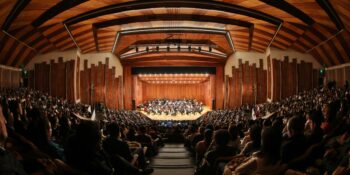
(Versión en español aquí)

With a history spanning over 50 years, the Orquesta Filarmónica de Bogotá has become an international benchmark for its extensive repertoire of Western, traditional Colombian, and Latin American music, as well as its symphonic fusion with genres like rock and salsa. The repertoire selected for each season is as versatile as the mastery of its performers in reproducing the authentic sound of each era and region.
It was a delight to revisit the living photograph of what was the first venue I attended to listen to the OFB, the León de Greiff Auditorium. This architectural work, in the heart of the Universidad Nacional de Colombia and declared a National Monument, has been the scene not only for artistic events but has also yielded its stages to vehement speeches of intellectual and social transformation. The recent renovation of the auditorium preserved the essence of its avant-garde design and its acoustic warmth, and the orchestra once again demonstrated its mastery of blending its frequencies with the wooden structure to obtain a wide palette of timbres. Another point that I must highlight is that the seating was not reformed with beverage holders as is happening in important international auditoriums. In my opinion, the combination of music and food is typical of restaurants.
Regardless of the generations of musicians, conductors, and arrangers who have made their careers in this orchestra, the diversity of its audience, and the interaction with new technologies, the hallmark sensory experience remains. On this occasion, the special program that was prepared to praise Colombia’s geographical privilege lifted an ecstatic audience that could not remain seated. This is another of the qualities in symphonic events that persist over time; it is not only Colombian or popular music that manages to motivate the listener’s interaction with the orchestra, the Bogotá public by tradition has always felt a great appreciation and admiration for Western musical expression. I recall on this same stage an intense silent conversation between Johannes Moser and the attendees, which culminated in a frenzy during the final chords of Shostakovich’s Cello Concerto No. 1 and the spectators’ cry of jubilation. As is customary in Colombia, the artists cannot leave the stage without parading through four rounds of applause and performing at least two pieces in the encore.

The June 15 concert was no exception; a full-house auditorium was gradually led on a cruise of emotions along the Pacific and Caribbean coasts of Colombia. In the interview that you will find below this article, maestro Rubián Zuluaga, assistant director of the Bogotá Philharmonic Orchestra, narrates how in this substantial selection of pieces a mixture of traditional rhythms with innovative orchestration techniques is manifested as if it were film music. The program is a compilation of instrumental and vocal works written for the traditional instruments of Colombian folklore, which have been adapted with great fidelity and creativity to symphonic orchestration. This is a task that the OFB has been pursuing practically since its foundation to preserve the country’s native cultural values. The collection of studio albums that has earned the orchestra two Latin Grammy Awards has been entirely dedicated to the recording of famous Colombian pieces.

The gala began with the work Canción de la Tierra composed by Andrés Sánchez Angarita, a double-bassist of the OFB. This piece, which is part of the album “Salvemos la Tierra Ya” by the same author, is an exaltation to biodiversity, but also a call to stop the uncontrolled exploitation of natural resources. The piece contrasts sections of great orchestral density with light melodies in the woodwinds, representing the immensity of the jungle and the mountains, and the fragility of the birds that fly over them. During the performance, overwhelming images of nature and the disasters caused by industry and excess waste were projected. Immediately, Pachito Eché by the Bogotá composer Alex Tobar, was the piece that raised the party atmosphere in the auditorium. It is interesting to see the evolution of this song thanks to its catchy melodies. Although it was originally composed in son paisa, an emblematic folk music genre from the Antioquia region, Benny Moré catapulted it to international success in a mambo version. This could be the reason why arranger Ricardo Hernández Mayorga has included a section in which the work moves to a 1950s Cuban dance hall.

In this fusion of Colombian rhythms with foreign music, it is worth mentioning the work of the composer Luis Eduardo Bermúdez who, thanks to his interaction with tropical music and jazz, gave a new meaning to the cumbia and porro genres. Lucho Bermúdez’s project resembled Benny Goodman’s Big Bands; traditional groups were transformed into large wind ensembles that played attractive harmonies and passionate improvisational solos. Colombia Tierra Querida, one of his most important compositions and which has become the country’s second anthem, is usually the closing work in such events. Although the performance was only instrumental on this occasion, it was inevitable that the audience would sing along to the refrain while accompanying themselves with their palms and swaying their hips to the spell of the cumbia. Likewise, each family of the orchestra performed their own choreography, and the percussion improvisation sections, essential in Caribbean music due to its African heritage, brought the gala to its climax. Transporting ourselves to the western region of the mountain range, where a deep ocean can be seen in which humpback whales find the waters warm for their mating season, the currulao brings together the flavors and knowledge of the Colombian Pacific. The Afro-Colombian composers Petronio Álvarez (1914) and Hugo Candelario (1967) have extolled the richness of this music so that it can be appreciated throughout the Colombian territory. From Bahía Solano to Tumaco, the chonta marimba is the emblematic instrument of Pacific folklore; the unique sound of its keys immediately transports us to this region. On this occasion, in what seemed to me to be a combination of the vibraphone and the marimba, the arrangements of Mi Buenaventura and Pacífico Amoroso translated the tonalities of this Colombian idiophone and recreated the freshness of the mangroves and coral reefs.
This festive gathering, in which the orchestra musicians wore colorful blouses and shirts, once again confirmed the importance of disseminating Colombian folklore through symphonic and contemporary language, preserving its identity and authenticity. For access to prerecorded and streamed concerts by the Orquesta Filarmónica de Bogotá visit https://espaciofilarmonico.gov.co/ My Interview with Maestro Zuluaga is below, click the “CC” for English subtitles!)
Hairspray at TPAC
You (Nashville) Can’t Stop the Beat
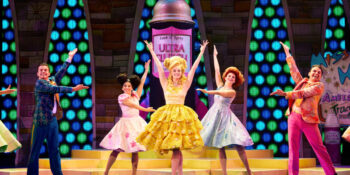
Tuesday, June 11 was the opening night performance of Hairspray at TPAC. Hairspray is a Tony Award winning musical with music by Marc Shaiman and lyrics by Marc Shaiman and Scott Wittman, with a book by Mark O’Donnell and Thomas Meehan, based on John Waters’s 1988 film of the same name. Hairspray first opened on Broadway at the Neil Simon Theatre on August 15, 2002. The musical numbers include 1960s-style dance music and rhythm and blues. Set in 1962 Baltimore, Maryland, the production follows teenage Tracy Turnblad as she auditions to dance on The Corny Collins Show, a local TV dance program. Although she is discouraged from this by her own mother, who is fearful of people making fun of Tracy because of her weight, Tracy wins a role on the show with the help of her black friend, Seaweed, who shows her some new dance moves. Seaweed is frustrated that black people only have one night a month to dance on the program and Tracy immediately agrees and wonders why they can’t all dance together.

She becomes an instant celebrity and inspiration after joining the show. She tells Corny Collins that if she ran the show, “every night would be Negro Night.” As she becomes closer friends with Seaweed and his mother, Motormouth Maybelle, Tracy convinces everyone to march against the station at the Mother-Daughter Day dance. Act I ends with the police coming and arresting them all for their protest. Once everyone is back together again, feeling defeated, they come up with a plan to integrate the show, and Motormouth sings about the long battle for equality. The musical ends on the day of the Miss Teenage Hairspray competition, hosted by the Corny Collins show. Although banned from appearing, Tracy storms the show with all of her friends (black and white) and they dance and sing “You Can’t Stop the Beat.” Tracy wins the title of Miss Teenage Hairspray, and declares that The Corny Collins Show is “now and forevermore” racially integrated, while everyone cheers. There couldn’t be a happier ending than that!
Caroline Eiseman as Tracy Turnblad was vivacious, energetic, and endearing. As the teen that won’t give up on her dreams or on her friends, Eiseman portrayed Tracy’s unfailing optimism and teen naivete perfectly. This musical is truly just as much about dance as it is singing and Eiseman dances her way through over two hours of choreography with ease (often while singing the musical numbers as well).
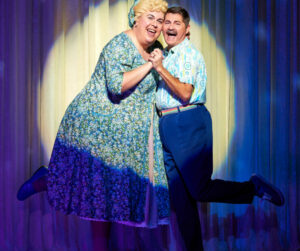
Greg Kalafatas shone as Edna Turnblad, Tracy’s mother. Yes, Tracy’s mother is traditionally played by a man in full drag. In the 1988 movie, Edna is played by the famous drag queen Divine. Edna is ashamed of her weight and is afraid of people perceiving Tracy as overweight and making fun of her for it. We find out in the middle of the play that she hasn’t left their apartment in years. Despite this, she quickly finds her confidence with the help of Tracy, her quirky husband Wilber (played by Ralph Prentiss Daniel), and Motormouth Maybelle. Kalafatas is a force with his comedic timing, vocals, and physical comedy. He often made the audience laugh just with the tone of his voice or a glare. The chemistry between Kalafatas and Daniel was cheeky and sweet. Maybe it’s because I’m not a teen, but I much preferred their romance and love over teen Tracy and her heartthrob, Link.
Seaweed is the character that first alerts Tracy to the inequality on the show. Seaweed shows Tracy a dance move that helps her get noticed while also expressing his frustration that black people can only dance on television one night a month. Josiah Rogers was incredibly charismatic as Seaweed. When he was on stage, it was difficult to look at anyone else.
Seaweed’s mother, Motormouth Maybelle, is the only black character that isn’t a teenager. Deidre Lang had the difficult task of portraying this character who has suffered the most while never losing hope. In fact, when the teens start to believe all is lost, it’s Motormouth that convinces them to continue to fight for equality. Lang’s portrayal of Motormouth was wonderfully compelling. When she sang “I Know Where I’ve Been,” the most powerfully emotional song of the show, I got goosebumps.
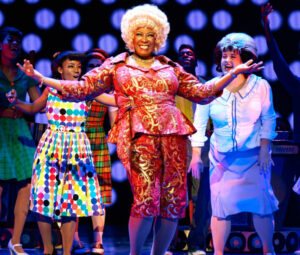
The main antagonists of the play, Amber Von Tussle and her mother Velma Von Tussle were played by Caroline Portner and Sarah Hayes, respectively. They were delightfully evil and get their comeuppance in the end in a most satisfying way. Sarah Hayes in particular was completely believable as the middle-aged beauty queen now living vicariously through her daughter.
Another actress that I really enjoyed was Emmanuelle Zeesman. She played three smaller characters: Prudy Pingleton, the gym teacher, and the matron at the prison, and she made me laugh as every single one. Her exaggerated physical comedy was unmatched.
Because this musical is set in the 60’s, one expects lots of bright, fun fashion (think mod fashion, Twiggy, Jackie O, and Brigitte Bardot) and William Ivey Long did not disappoint as Costume Designer. The clothes were bright without being overwhelming, and the hair was big! The scenic design by David Rockwell was also inspired, and I particularly liked the scene in which Tracy, Penny, and Amber are in their respective rooms and singing “Mama I’m a Big Girl Now” with their mothers. All three rooms are on stage at the same time.
There was really only one small thing that I didn’t particularly care for: the teen girls (of course played by adult women) all had a shrill affect to their voices. I assume this was meant to make them seem young, but it really only translated as irritating. In fact, I was so taken aback at the piercing opening lines of “Good Morning Baltimore,” that I startled. It certainly wasn’t Eiseman’s regular voice, because she has a stunning voice when not singing those high notes.
A funny, quirky, and lovable play that is able to seamlessly blend humor and moments of solemnity, Hairspray is a must-see. There might not be a more joyful and uplifting song in any musical than “You Can’t Stop the Beat.” The last song, performed through the end of the play, reminds us that social change will not be stopped, and neither will our dancing feet!
From Our Far-flung Correspondents Series:
Milwaukee Symphony Orchestra: Fresh, Flavor, and Forward

Visit Milwaukee unveiled new branding in April 2024 that included new messaging – Milwaukee: Fresh, Flavor, and Forward. Milwaukee Fresh is the spirit of innovation and exploration that surges through a city where different cultures, ideas, and perspectives continually converge. Milwaukee Flavor is the songs, meals, gatherings, and traditions arising from all the corners of a city where people from around the world came to seek community and opportunity. Milwaukee Forward is what surrounds the community: the people, the positivity, the collaborative energy, and the welcoming and generous spirit. This past weekend, the Milwaukee Symphony Orchestra embodied this messaging harmoniously.
Founded in 1959, the Milwaukee Symphony Orchestra is the largest cultural institution in Wisconsin. Initiatives such as nationally syndicated radio broadcasts, the nationally recognized Arts in Community Education program, and the years-long project to restore a former movie palace in downtown Milwaukee into what is now known as the Bradley Symphony Center, all prove the Milwaukee Symphony Orchestra’s robust commitment to enriching the greater community through the study and performance of music.

Leading many of these objectives from the podium is Music Director Ken-David Masur. In his fifth season with the Milwaukee Symphony Orchestra, Masur’s innovative programming has already made an impact throughout the city. Previously serving as the Associate Conductor of the Boston Symphony Orchestra, Maestro Masur has an extensive list of guest Conductor engagements – both professional and pedagogical (at educational institutions). Masur and his family are proud residents of Milwaukee.
Perhaps by chance or perhaps by fate, last weekend’s program presented Visit Milwaukee’s new messaging of fresh, flavor, and forward, with Milwaukee resident and music director Masur at the helm.
Milwaukee: Fresh
Carlos Simon’s work, Fate Now Conquers, opened the performance. Composed in 2020 and premiered later that year by the Philadelphia Orchestra, this past weekend proved to host the first performances by the Milwaukee Symphony Orchestra. Of the work, Simon offers the following:
This piece was inspired by a journal entry from Ludwig van Beethoven’s notebook written in 1815: “Iliad. The Twenty-Second Book But Fate now conquers; I am hers; and yet not she shall share In my renown; that life is left to every noble spirit And that some great deed shall beget that all lives shall inherit.”
Using the beautifully fluid harmonic structure of the second movement of Beethoven’s Seventh Symphony, I have composed musical gestures that are representative of the unpredictable ways of fate. Jolting stabs, coupled with an agitated groove with every persona. Frenzied arpeggios in the strings that morph into an ambiguous cloud of free-flowing running passages depicts the uncertainty of life that hovers over us.
We know that Beethoven strived to overcome many obstacles in his life and documented his aspirations to prevail, despite his ailments. Whatever the specific reason for including this particularly profound passage from the Iliad, in the end, it seems that Beethoven relinquished to fate. Fate now conquers.
Starting the evening with Carlos Simon’s piece was a successful choice. Drawing inspiration from the past, but very much remaining in a modern vernacular, the work somewhat imitates life by drawing a similarity for the way in which the Milwaukee Symphony Orchestra commits to artistic innovation in an older renovated facility. With a performance time of around five minutes, the economy of Fate Now Conquers became more appreciated after the breadth of Carl Orff’s Carmina Burana and the commitment necessary to experience that work in its entirety.
Milwaukee: Flavor

One was afforded the opportunity to meet the program’s trombone soloist, Megumi Kanda, during a free pre-concert discussion as part of an initiative titled Meet the Music. Scheduled sixty minutes prior to opening downbeats, such an opportunity is available before all performances occurring within the Classics series. Intending to create a better understanding about the repertoire and establish a dialogue with the soloist, host Ryan Tani, who primarily serves as the Milwaukee Symphony Orchestra’s assistant conductor, focused only on Tan Dun’s 2021 composition, Three Muses in Video Game for Trombone and Orchestra.
Perhaps most widely known for creating the award-winning score to Ang Lee’s film Crouching Tiger, Hidden Dragon, Tan Dun writes in a manner that combines elements of Chinese and Western cultures. The trombone concerto takes inspiration from Dunhuang, an ancient outpost along the Silk Road, where generations of monks and pilgrims carved shrines out of the rock and painted the cliffs – known today as the Morgan Cliffs. Each of the three movements enlists the trombone soloist to play in a manner that depicts traditional musical instruments appearing within the aforementioned paintings, respectively the bili, xiqin, and the sheng.
Like Carlos Simon’s work, these performances were also the first time that the Milwaukee Symphony Orchestra performed Tan Dun’s piece. Soloist Megumi Kanda’s playing was inspiring and so varied. Assertive multiple-tonguing passages and bold declarations gave way to a lyricism that engulfed the imagination and suspended time with its beauty and expansive range. On a few occasions, Tan Dun’s orchestration paired the violins with the soloist in unison passages displaced by octaves. Balance became compromised in these moments, often losing the majesty of the trombone to the eagerness of the high string brigade. Cinematic in nature, the first and second movement both ended in a manner befitting of a film scene fading to black. The first occurrence was powerful; however, happening a second time for the same utilitarian objective already began to feel a bit trite. Three well-deserved soloist bows for Megumi Kanda were offered by an energized audience.
Milwaukee: Forward
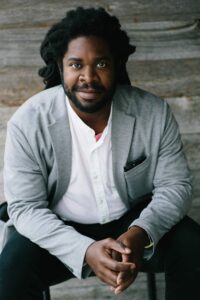
After intermission, Carmina Burana of Carl Orff concluded the program. This cantata is based on twenty-four poems from a medieval collection of the same name. Joining the orchestral forces are three vocal soloists, a chorus, and children’s choir, singing in Latin, Old French, and Middle High German. Topics within the poems are varied, covering the delights and dangers of gambling, gluttony, drinking, and the sorrows of love – all possible foreshadowing for the Republican National Convention being hosted by Milwaukee in July 2024.
Dashon Burton, bass-baritone, is the first vocal soloist to perform in Carmina Burana. He along with Sonya Headlam, soprano, flanked the conductor’s podium for the entire piece. Burton’s list of accolades and acclaimed performances continue to grow in collaboration with leading ensembles and conductors. Tonight’s performance was no exception. Using his voice to capture nuances of each poem, he heightened the emotion seemingly with ease.
Whereas Burton sang with an attentive command, tenor vocal soloist Brian Giebler masterfully delivered comedic reprise. Entering stage left just before the movement featuring him began, Giebler took residence directly in front of where Burton was sitting, immediately winning over the audience and preparing all for the hilarity that would soon ensue through song. Brian Giebler’s career continues to be on a trajectory as promising as his tone is clear and expressive. One should seek out Brian Giebler in performance. Burton reclaimed his real estate on stage at the end of the poem and Giebler found his way off stage, only momentarily, and appropriately, pulling focus while exiting.
Only participating towards the end of the hour-long work, Sonya Headlam’s instrument was worth the wait to hear. Equally comfortable concertizing and in productions, Headlam performs throughout the country and regularly with the Choir of Trinity Wall Street. Headlam’s ability to draw the audience in with an intimacy of tone and dynamic was welcomed in the Orff, and, in a way, nurtured one’s soul before the reprise of “Fortuna imperatrix mundi.”
Keeping pace with the vocal soloists was the Milwaukee Symphony Chorus. Chorus director Dr. Cheryl Frazes Hill and assistant director Timothy J. Benson prepared the ensemble with an energized diction and pacing, the result of which was an exciting contribution that maintained integrity through the final fermata. Although with a less-active role, the Milwaukee Children’s Choir realized their parts well under the leadership of artistic director Rachel Maki.
Maestro Masur and the Milwaukee Symphony Orchestra were prepared for a multitude of tricky rhythmic passages contained within Carmina Burana. Momentary discrepancies relating to vertical alignment and intonation were expected, and, at times, very present. Ensemble balance, however, proved to be a great strength.
The most moving portion of the evening was when Masur took time to acknowledge the retirement of one member from the Milwaukee Symphony Chorus and two musicians from the Milwaukee Symphony Orchestra. The vocalist has sung with the organization for thirty-two years, violist Helen Reich has performed with the organization for thirty-six years, and after forty-four years of service, violinist Tim Klabunde has decided to end their tenure. Congratulations to all and thank you for helping to build on to the legacy of these great ensembles!
Milwaukee: Fresh, Flavor, and Forward. Milwaukee Symphony Orchestra: Yes, please.



